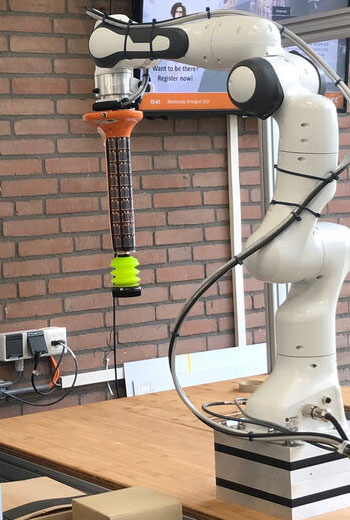The Eindhoven University of Technology, which has been working with CEA-Liten on flexible circuits for years, evaluated a flexible motion detection and gesture recognition sensor made using printed electronics. The research, published in Nature Electronics [3], focused on the integration of sensors made from PVDF-TrFe* organic polymers, known for their piezoelectric and pyroelectric properties. There is no lack of prior research on this kind of sensor. Not so common is research on multi-pixel integration, which is particularly challenging due to the many interconnections required and the impact not only on integration, but also on the quality of the signals measured.
Here, printed organic thin-film transistors (OFTTs) were co-integrated under the sensors' flexible surface. This type of OFTT was developed by CEA and partners for the EU H2020 ATLASS project completed in 2019 and a system-level prototyping line was built. In-pixel active circuits amplify the signal for an improved signal-to-noise ratio and a detection range ten times longer. The approach also enables multiplexed sensor arrays for human gesture recognition at a range of 40 cm at 100 frames per second.
*PVDF-TrFE polyvinylidene fluoride-co-trifluoroethylene
The electrical performance and high yields obtained by the technology developed and the circuits fabricated by the CEA and its partners have set a new state of the art. These results illustrate the potential of structural electronics in terms of innovation and confirm not only the CEA's leadership in organic thin film transistors, but also CEA-Liten's capacity to nurture a technology from concept to complete system prototype.

The array of 50 printed sensors wound around the surface of a robotic arm can detect human gestures and potential collisions up to 40 cm away at 100 fps. © CEA